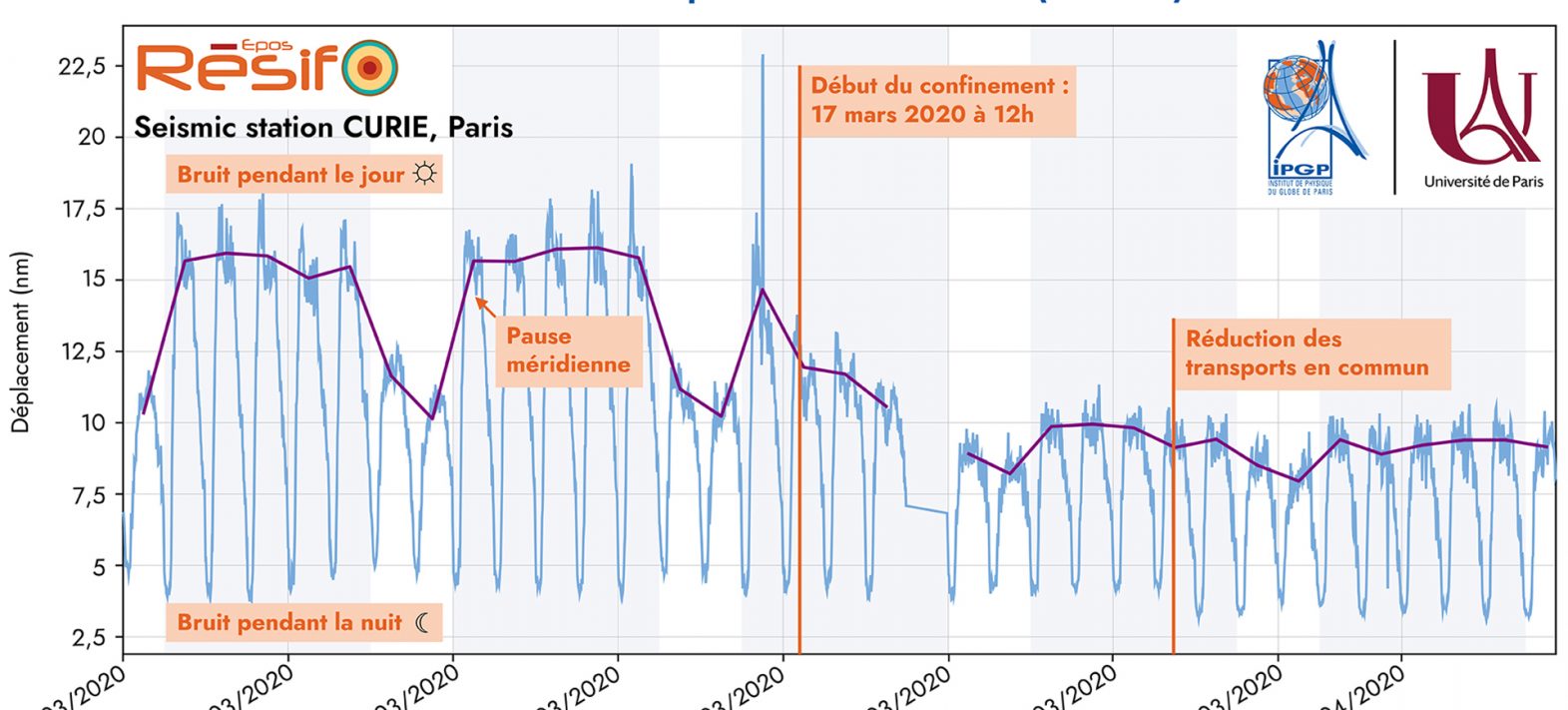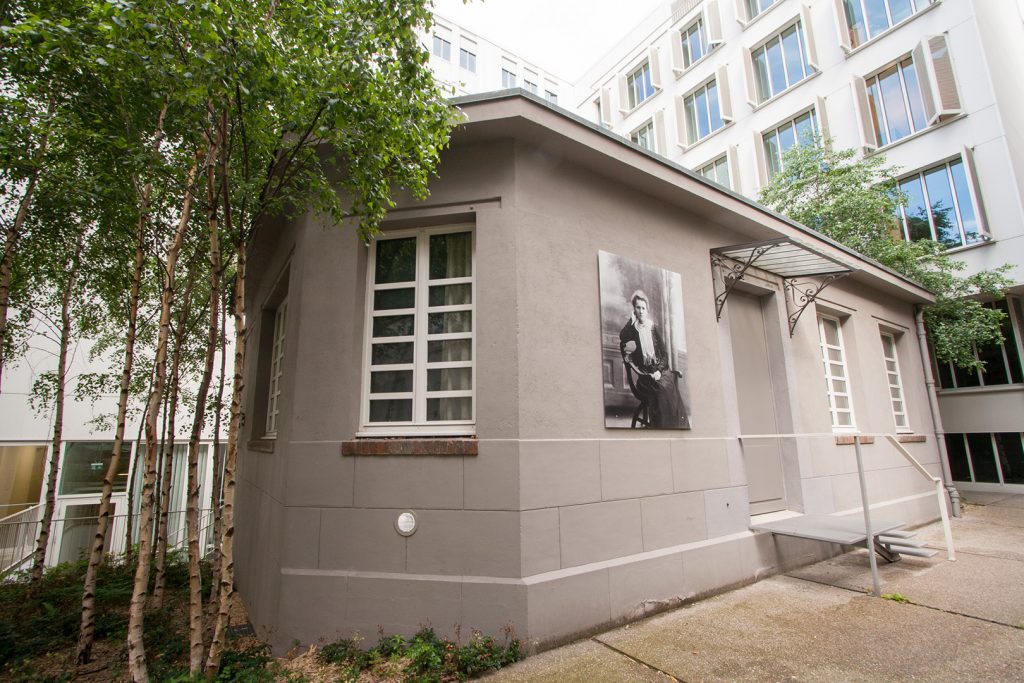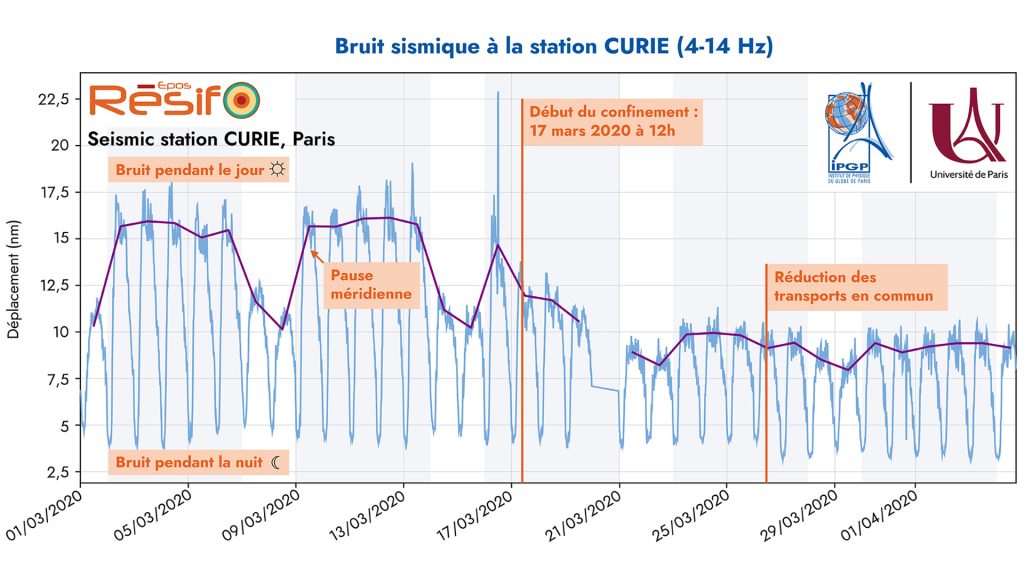The Quarantine as seen by the IPGP seismometer
The seismometer installed in the basement of the IPGP's Pavillon Curie has recorded the "signature" of human activity since the beginning of March, and its evolution since the containment was put in place.

Latest news










